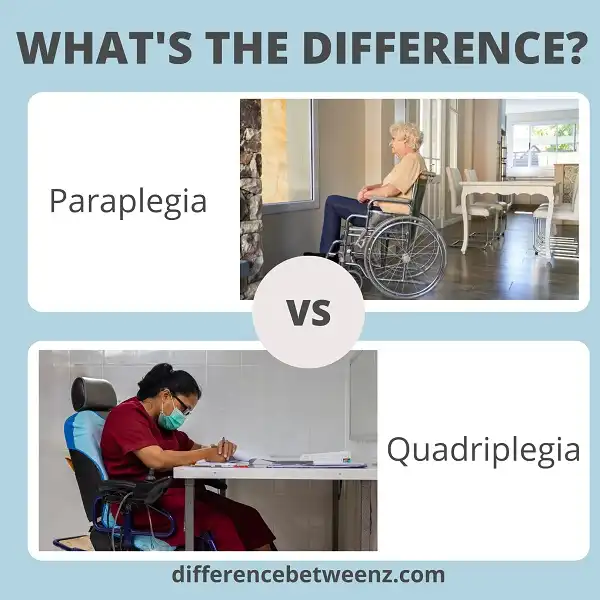Paraplegia and quadriplegia are both types of paralysis that affect the limbs. However, there is a big difference between the two conditions. Paraplegia affects the lower body, while quadriplegia affects all four limbs. Quadriplegia is a more serious condition and can result in respiratory failure or death. Paraplegia may cause some disability, but it is not as life-threatening as quadriplegia. If you are experiencing any type of paralysis, it is important to see a doctor right away for diagnosis and treatment.
What is Paraplegia?
Paraplegia is a condition in which the lower half of the body is paralyzed. Paralysis may be caused by an injury to the spinal cord or a disease that affects the nervous system. Paraplegia can also be congenital, meaning it is present from birth. People with paraplegia often have difficulty walking and may require the use of a wheelchair. Paraplegia can vary in severity, and some people with the condition may be able to walk with the assistance of devices such as leg braces or crutches. Paraplegia can have a significant impact on a person’s quality of life, but there are many resources available to help people adapt and live fulfilling lives.
What Is Quadriplegia?
Quadriplegia, also known as tetraplegia, is a condition in which a person’s limbs and torso are paralyzed. Quadriplegia can be caused by a traumatic injury to the spine, such as a car accident or a fall. It can also be caused by a disease or condition that damages the spinal cord, such as polio or multiple sclerosis. Quadriplegia can be partial or complete. In partial quadriplegia, some movement and sensation are preserved below the level of injury.
In complete quadriplegia, all movement and sensation are lost below the level of injury. Quadriplegia is a serious condition that can have a profound effect on a person’s life. Quadriplegics need assistance with all activities of daily living, including eating, bathing, and dressing. They may also need help with respiratory care and bowel and bladder management. Quadriplegics typically require lifelong care and support.
Difference between Paraplegia and Quadriplegia
Paraplegia and quadriplegia are both types of paralysis that can occur as a result of an injury to the spinal cord. Paraplegia is paralysis of the lower extremities, while quadriplegia is paralysis of all four extremities. Paraplegia can be caused by injuries to the thoracic, lumbar, or sacral regions of the spinal cord, while quadriplegia is typically caused by injuries to the cervical region.
Paraplegia may also be accompanied by partial paralysis of the upper body, while quadriplegia is always accompanied by complete paralysis of the upper and lower body. Quadriplegia is more debilitating than paraplegia and often requires lifelong care. Paraplegics may be able to walk with the use of braces or other assistive devices, while quadriplegics will require a wheelchair for mobility.
Conclusion
Paraplegia and quadriplegia are two distinct conditions that can affect a person’s ability to move. Quadriplegia is a more severe condition that results in the loss of movement in all four limbs, while paraplegia affects movement in the lower body. There are many factors that can contribute to either condition, such as an accident or injury. If you or someone you know has been diagnosed with one of these conditions, it’s important to understand the differences between them and how they will impact your life.


